|
Texas Banded Gecko
|
- Order: Squamata (scaled reptiles)
- Suborder: Lacertilia (=Sauria; lizards)
- Family: Gekkonidae (geckos)
- Subfamily: Eublepharinae (geckos with eyelids)
- Genus: Coleonyx (banded geckos)
|
|
Scientific Name: Coleonyx brevis Stejneger,
1893 |
| Habitat: Rocky areas,
cliffs, and washes. |
Koleos="covered," onyx="claw,"
brevis="short" in reference to the comparatively
short nose of this species
|
| Length: to about 4.5
inches total. |
|
| Food: Small insects
and spiders. |
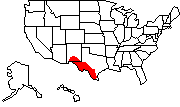 |
|
This picture is of one of two female Texas banded
geckos given to me late June 2002. The picture was taken the
day after I received them. Neither individual had its
original tail. |
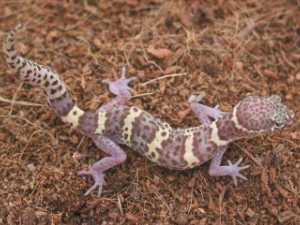 |
| The two geckos shared a
10-gallon aquarium furnished with tan sandstone rocks and a hide
box made from a butter dish. The picture at right is of the
other specimen. Its pattern was a little lighter and
fainter. Both lizards unfortunately died within a week of
each other in mid/late September 2003. |
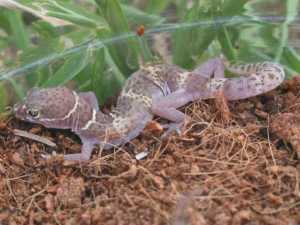 |
| One of the geckos was gravid
when captured, and had laid its eggs between its capture and the
day I picked up the geckos. I didn't know if the eggs were
still viable, but I tried incubating them just in case. The
picture at right is of the two eggs (the typical clutch size) with
a United States dime for size comparison. My patience was
tested until approximately 76 days later when one of the two eggs
hatched! The only problem is that the baby was at my
parents' house out of state, so I had to send them fruit flies and
tell them how to feed and care for the gecko. |
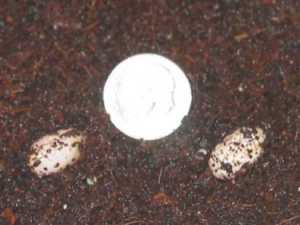 |
| This is the only picture I have
of the baby. All you can see is the lizard's tail as it runs
for shelter underneath its makeshift hiding spot (a folded
business card). Note the difference in color pattern in the
juvenile--there's a lot more bands on the tail; the bands
typically fade with age.
Unfortunately, the baby gecko only lived for a
month.
|
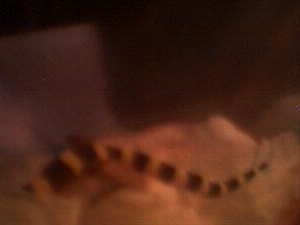 |
|
I currently have one male and one female, purchased in
March 2004. |
|